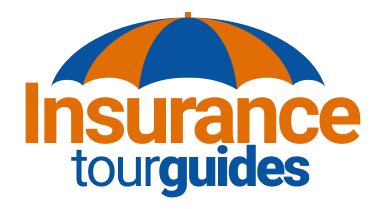Why Natural Disaster Coverage Matters
Hurricanes, floods, earthquakes, and wildfires are happening more frequently and with greater intensity. But here’s the catch: most standard insurance policies don’t automatically cover these events. That means homeowners and renters could be left footing the bill for major damage if they’re not properly insured.
Understanding what’s included in your current policy—and what isn’t—is the first step in protecting your property from natural disaster-related losses.
What’s Typically Included in Standard Policies
Most standard homeowners and renters insurance policies include coverage for windstorms, hail, and certain types of water damage—but that’s about it when it comes to natural disasters.
Here’s a quick look at what you can usually expect:
| Disaster Type | Covered by Standard Homeowners Insurance? | Requires Additional Policy? |
|---|---|---|
| Hurricanes (wind) | Yes (for wind damage, not flooding) | Yes, for flood insurance |
| Earthquakes | No | Yes |
| Floods | No | Yes |
| Wildfires | Yes | Sometimes subject to exclusions |
| Tornadoes | Yes | Usually included |
| Mudslides/Landslides | No | Yes, may require specialty plan |
How to Get Covered for Natural Disasters
If your current policy doesn’t include protection for a specific natural disaster, you’ll likely need a separate rider or standalone policy. Here are your main options:
Flood Insurance
Offered through the National Flood Insurance Program (NFIP) or private insurers, flood insurance covers damage from rising water, not rain entering from a broken window or roof. It’s a must for high-risk zones and increasingly recommended for moderate- and low-risk areas too.
Earthquake Insurance
Typically available as an add-on to your homeowners policy, this covers damage from shaking, cracking foundations, and structural collapse. Deductibles tend to be high—anywhere from 10–20% of the home’s value.
Windstorm Coverage
In hurricane-prone areas, some insurers require a separate windstorm policy or impose high deductibles. Check if you need a windstorm rider to be fully protected.
Wildfire Insurance
In high-risk regions like California, wildfire coverage can be tricky. Some private insurers are pulling out of the market, which means homeowners might need to go through state-backed plans or FAIR plans.
Key Factors That Influence Coverage and Cost
Several factors impact whether you can get disaster insurance and how much you’ll pay:
-
Location: High-risk zones often come with higher premiums and more exclusions.
-
Home Construction: Newer homes built to current codes may qualify for discounts.
-
Mitigation Measures: Installing storm shutters, elevating your home, or using fire-resistant materials can lower costs.
-
Claims History: Multiple claims, even for unrelated issues, can impact your premiums.
Renters Need Disaster Insurance Too
While landlords are responsible for the building itself, renters are on the hook for replacing personal belongings. If you rent in a high-risk zone, ask your insurer about add-ons or separate policies for flood, wildfire, or earthquake protection.
Filing a Claim After a Disaster
After a natural disaster strikes, filing an insurance claim can be overwhelming. Here are some tips to make the process smoother:
-
Document the Damage: Take photos and videos before cleaning up.
-
Notify Your Insurer Quickly: The sooner you file, the faster you’ll get help.
-
Keep Receipts: Save receipts for any temporary repairs or accommodations.
-
Get a Professional Inspection: Structural damage isn’t always visible right away.
Disaster Insurance and Government Aid: What’s the Difference?
Don’t rely solely on FEMA or other federal programs. Government disaster aid is often limited and may come in the form of low-interest loans—not outright reimbursement. Insurance, on the other hand, provides a defined benefit when disaster strikes, assuming you have the right coverage in place.
Smart Steps to Prepare Before a Disaster Hits
Being proactive can save you money and stress. Here’s a quick checklist:
| Action | Why It Matters |
|---|---|
| Review Your Insurance Annually | Ensures coverage reflects current risks and home value |
| Create a Home Inventory | Speeds up claims processing for lost/damaged items |
| Secure Important Documents | Keep policy info, IDs, and insurance contacts safe |
| Invest in Risk Mitigation | Could reduce premiums and prevent severe damage |
Closing Thoughts
Natural disasters are unpredictable, but your financial response doesn’t have to be. With the right insurance policies in place, you can face floods, fires, and quakes with a lot more confidence. Take the time to understand your risks and fill in the coverage gaps—before disaster strikes.

